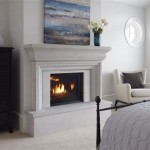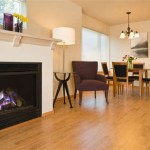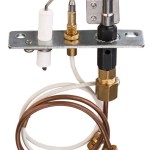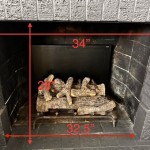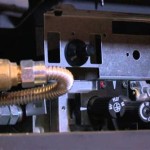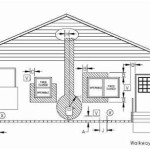Woodworking Plans: Crafting the Perfect Fireplace Mantel Shelf
The fireplace mantel shelf serves as a focal point within a living space, functioning as both a decorative element and a practical surface for displaying cherished items. Constructing a custom mantel shelf through woodworking offers the opportunity to tailor the piece to specific aesthetic preferences and spatial constraints. This demands careful planning, precise execution, and adherence to safety protocols. A comprehensive set of woodworking plans is essential for achieving a successful outcome.
Woodworking plans for a fireplace mantel shelf typically include detailed diagrams, measurements, and step-by-step instructions outlining the entire construction process. The plans often specify the required materials, tools, and hardware. The level of detail provided in the plans can vary depending on the complexity of the design and the intended audience. Beginner woodworkers may benefit from plans that offer extensive guidance, while experienced craftsmen may prefer plans that allow for greater flexibility and customization.
The selection of appropriate woodworking plans is critical. Factors to consider when choosing plans include the desired style (e.g., traditional, modern, rustic), the dimensions of the fireplace opening, the weight-bearing capacity required, and the skill level of the woodworker. Online resources, woodworking magazines, and specialized plan providers offer a vast selection of fireplace mantel shelf plans, each with its own unique features and characteristics. Prior to commencing construction, it is crucial to thoroughly review the chosen plans and ensure that they align with the project's objectives.
Understanding the Importance of Accurate Measurements
Accurate measurements are pivotal to the success of a fireplace mantel shelf project. Precise measurements directly impact the fit, appearance, and structural integrity of the finished product. Woodworking plans invariably include detailed dimensions for each component of the mantel shelf, including the shelf itself, the supporting brackets or corbels (if applicable), and any decorative moldings or trim. Prior to cutting any lumber, it is imperative to double-check all measurements against the physical dimensions of the fireplace opening and the surrounding wall. It is also recommended to account for potential variations in wall surfaces, such as unevenness or protrusions.
Utilizing reliable measuring tools is paramount. A high-quality tape measure, a combination square, and a level are essential for obtaining accurate measurements. Digital levels can provide enhanced precision and are particularly useful for ensuring that the mantel shelf is perfectly horizontal. When measuring the fireplace opening, it is advisable to take multiple measurements at different points to identify any irregularities. These measurements should then be carefully compared to the dimensions specified in the woodworking plans. Any discrepancies should be addressed before proceeding with the construction process.
Furthermore, it is important to understand the concept of "reveal" in woodworking. Reveal refers to the amount of material that is visible or exposed when two or more pieces are joined together. In the context of a fireplace mantel shelf, reveal may apply to the edges of the shelf itself or to the joints between the shelf and the supporting brackets. The woodworking plans should clearly indicate the desired reveal measurements, and these measurements must be accurately transferred to the lumber during the cutting and assembly process.
Ignoring the importance of accurate measurements can lead to a variety of problems, including gaps between the mantel shelf and the fireplace surround, misalignment of components, and structural instability. In severe cases, inaccurate measurements may necessitate the complete rebuilding of the mantel shelf, resulting in wasted time and materials. Therefore, meticulous attention to detail and a commitment to accuracy are essential throughout the measurement process.
Selecting the Right Wood Species
The selection of an appropriate wood species significantly impacts the aesthetic appeal, durability, and overall cost of a fireplace mantel shelf. Different wood species exhibit unique characteristics in terms of grain pattern, color, hardness, and resistance to moisture and decay. Woodworking plans often suggest suitable wood species based on the intended style and the environmental conditions in which the mantel shelf will be installed. However, the final decision ultimately rests with the woodworker, who must consider personal preferences, budget constraints, and the availability of specific wood species in their local area.
Hardwoods, such as oak, maple, cherry, and walnut, are commonly used for fireplace mantel shelves due to their strength, durability, and attractive grain patterns. Oak is a popular choice for traditional designs, while maple offers a lighter color and a more contemporary look. Cherry is prized for its rich reddish-brown hue, which deepens over time. Walnut is a premium hardwood known for its dark color and distinctive grain patterns. These hardwoods are typically more expensive than softwoods but offer superior performance and longevity.
Softwoods, such as pine, fir, and cedar, are also viable options for fireplace mantel shelves, particularly for rustic or country-style designs. Pine is a relatively inexpensive softwood that is easy to work with and readily available. Fir is slightly stronger than pine and offers a more uniform grain pattern. Cedar is naturally resistant to moisture and decay, making it a good choice for mantel shelves that will be exposed to humid conditions. Softwoods are generally less expensive than hardwoods but may require additional finishing to enhance their durability and appearance.
In addition to the inherent properties of different wood species, it is also important to consider the grade and quality of the lumber. Lumber grades are determined by the presence of knots, blemishes, and other imperfections. Clear grades of lumber are free from knots and blemishes, while lower grades may contain numerous imperfections. The choice of lumber grade will depend on the desired aesthetic and the willingness to accept imperfections. It is also important to ensure that the lumber is properly seasoned and dried to prevent warping or cracking after installation.
The appropriate wood species should also be selected in consideration to the type of finish being applied to the mantel. Certain finishes, such as stains, work best with wood species that have open grains such as oak. Other finishes such as paint, are better matched with a closed grain wood such as maple.
Ensuring Proper Installation and Safety
Proper installation is crucial for ensuring the safety and stability of a fireplace mantel shelf. The weight of the mantel shelf, combined with the weight of any items placed on it, can exert significant stress on the supporting structure. Woodworking plans typically provide detailed instructions on how to securely attach the mantel shelf to the wall, taking into account the type of wall construction (e.g., drywall, brick, or stone). Adherence to these instructions is essential for preventing the mantel shelf from collapsing or pulling away from the wall.
The type of fasteners used to attach the mantel shelf to the wall will depend on the wall construction and the weight-bearing capacity required. For drywall walls, it is important to locate the wall studs and use screws or lag bolts that are long enough to penetrate the studs. Hollow wall anchors may be used in areas where studs are not accessible, but these anchors have a limited weight-bearing capacity. For brick or stone walls, masonry screws or concrete anchors are required. It is important to consult with a knowledgeable hardware professional to select the appropriate fasteners for the specific application.
In addition to the type of fasteners used, the spacing and placement of the fasteners are also critical. The fasteners should be evenly spaced along the length of the mantel shelf to distribute the weight evenly. The fasteners should also be placed in areas where they will provide maximum support, such as near the ends of the shelf or along the edges of the supporting brackets. It is important to pre-drill pilot holes for the fasteners to prevent the wood from splitting or cracking.
Safety considerations are paramount when working with power tools and handling lumber. Woodworking plans typically include safety precautions that should be followed at all times. It is essential to wear appropriate safety gear, such as safety glasses, hearing protection, and a dust mask, when operating power tools. Power tools should be used in a well-ventilated area to prevent the inhalation of dust and fumes. Lumber should be handled carefully to avoid splinters or other injuries. When lifting heavy pieces of lumber, it is important to use proper lifting techniques to avoid back strain.
Fire safety is another important consideration when installing a fireplace mantel shelf. Building codes typically specify minimum clearances between the mantel shelf and the firebox opening. These clearances are designed to prevent the mantel shelf from overheating and potentially catching fire. It is important to consult with local building codes to ensure that the mantel shelf is installed in compliance with all applicable regulations. In addition, it is advisable to use fire-resistant materials, such as cement board or metal flashing, to protect the mantel shelf from heat exposure.

See How Our Modern Diy Fireplace Mantel Shelf Updated Living Space

Diy Fireplace Mantel Shelf Her Tool Belt

How To Build A Diy Mantel Shelf Simply Home

Fireplace Mantel Shelf Free Woodworking Plan Com

Wood Mantle With Storage Ana White
:max_bytes(150000):strip_icc()/sandandsisal-bdc76ad938a44d28ae9e23ef6c9fa331.jpg?strip=all)
17 Diy Fireplace Mantel Plans
:max_bytes(150000):strip_icc()/ablossominglife-4151b41015a64193a437e981c3aad037.jpg?strip=all)
17 Diy Fireplace Mantel Plans

How To Build A Wall Shelf Fireplace Woodworking Projects

Diy Rustic Fireplace Mantel The Cure For A Boring

Easy Fireplace Mantel Diy
Related Posts

